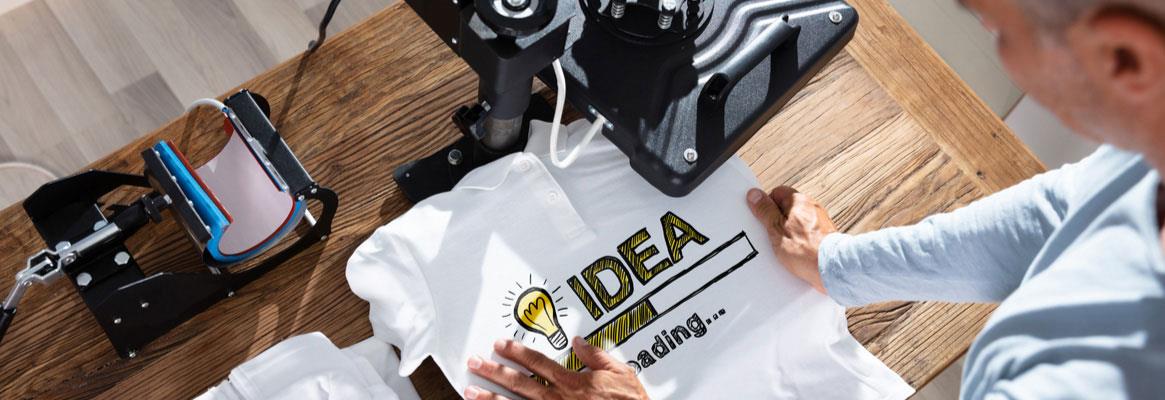The textile industry underwent a quantum leap in the late 1980s when after years of relying on analog printing techniques, there was finally a way to digitally print words and images onto fabric. The advent of digital textile printing would prove to be a gamechanger, forever altering the way companies choose to manufacture everything from bedding to umbrellas and everything in between.
Despite the many upsides to DTP, there’s still room for traditional printing techniques. It turns out that the old methods can sometimes be the best ones, depending on the situation.
But first, let’s briefly explain the basics of digital printing and screen printing, which was the predominant industry method before the 1990s:
Digital Printing
As the name suggests, digital textile printing uses computer-guided machinery to successfully apply ink onto a variety of fabrics. With the development of dye sublimation printing, the DTP process no longer required transfer paper, allowing manufacturers to apply ink directly onto textile media. As the DTP process has gotten more refined over the years, digital printing has become a process that can even be done at home.
Screen Printing
The origins of screen printing go back to the Song Dynasty in China. There, artisans used mesh, blades, and blocking stencils to transfer a layer of ink onto a substrate except where the ink is blocked by the stenciling. The ability to apply different layers of ink on top of one another meant they could successfully produce printed textiles with multi-coloured imagery and designs. While the original process has been altered over hundreds of years, the fundamentals remain the same.
You can do things with digital printing that cannot be done with traditional screen print techniques. However, the same is true the other way around. Let’s take a look at the benefits offered by using both options:
Benefits of Digital Printing
Thanks to the lack of moulds and other specialised machinery synonymous with screen printing, DTP allows for cost-effective printing in small batches. Without digital printing solutions, companies would need to order a high volume of printed textiles to make it worth it for everyone involved.
Another benefit of DTP is the ability to produce high-resolution imagery onto plain white textiles with no bleeding or chipping. The result is a finer finish and a long-lasting product.
Last but not least, digital textile printing is fast and reliable. Few moving parts compared to analog techniques mean a faster turnaround time, enabling printers to offer elaborate printing options with minimal risk.
Benefits of Screen Printing
Though far less efficient than DTP, screen printing is the preferred choice for specialised orders. These include those involving uneven and irregular textile surfaces and those requiring an exceptional grade of vibrancy.
Another advantage of screen printing is the ability to print onto darker-coloured fabrics. That’s because the ink used tends to be thicker and therefore shows up better on darker backgrounds.
Screen printing is slow and methodical, but that’s the point. It’s best utilised when the order requires a unique approach or when the quality would diminish if done digitally.
An Advisable Approach
Those thinking about entering the textile printing business, or considering adding it to their existing textile enterprise, ought to invest the most in the digital printing process. However, printing companies should also have a small screen-printing system on standby. That way, you’re adequately prepared for a gamut of client demands within a narrow band of product opportunities.
In conclusion, analog techniques like screen printing continue to coexist alongside digital textile printing. While the latter is without question the preferred choice for most situations, the former proves critical in the few instances where DTP falls short.










Comments